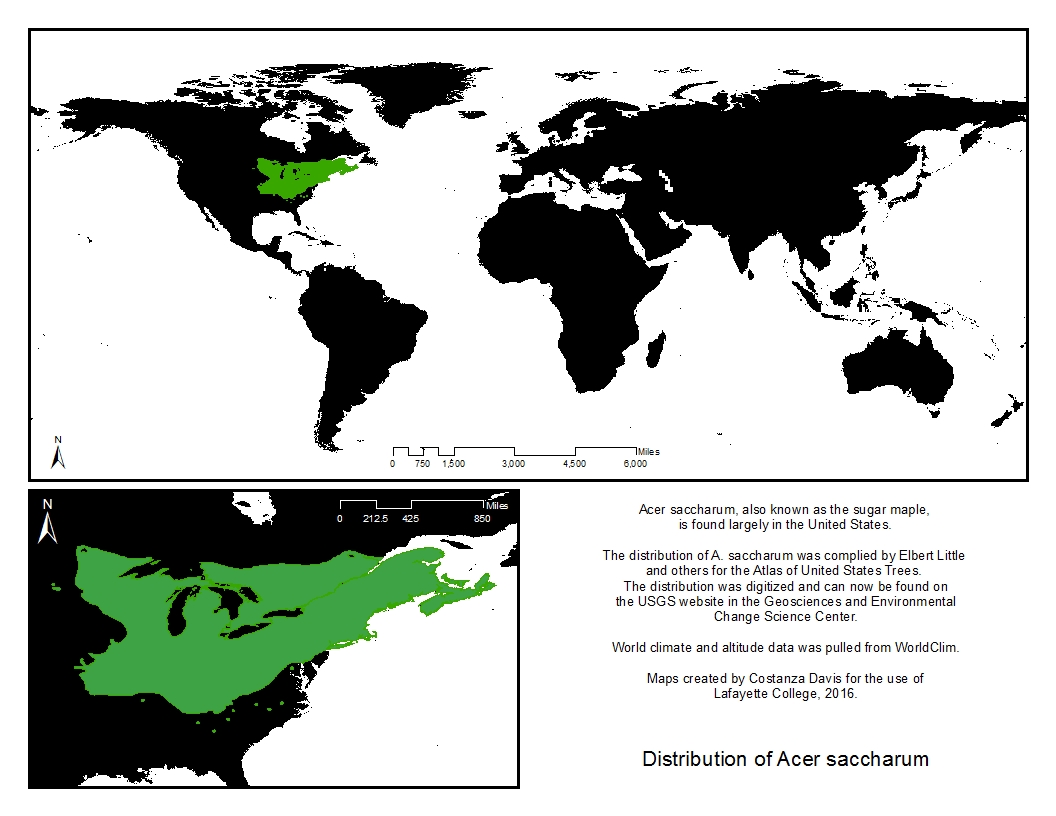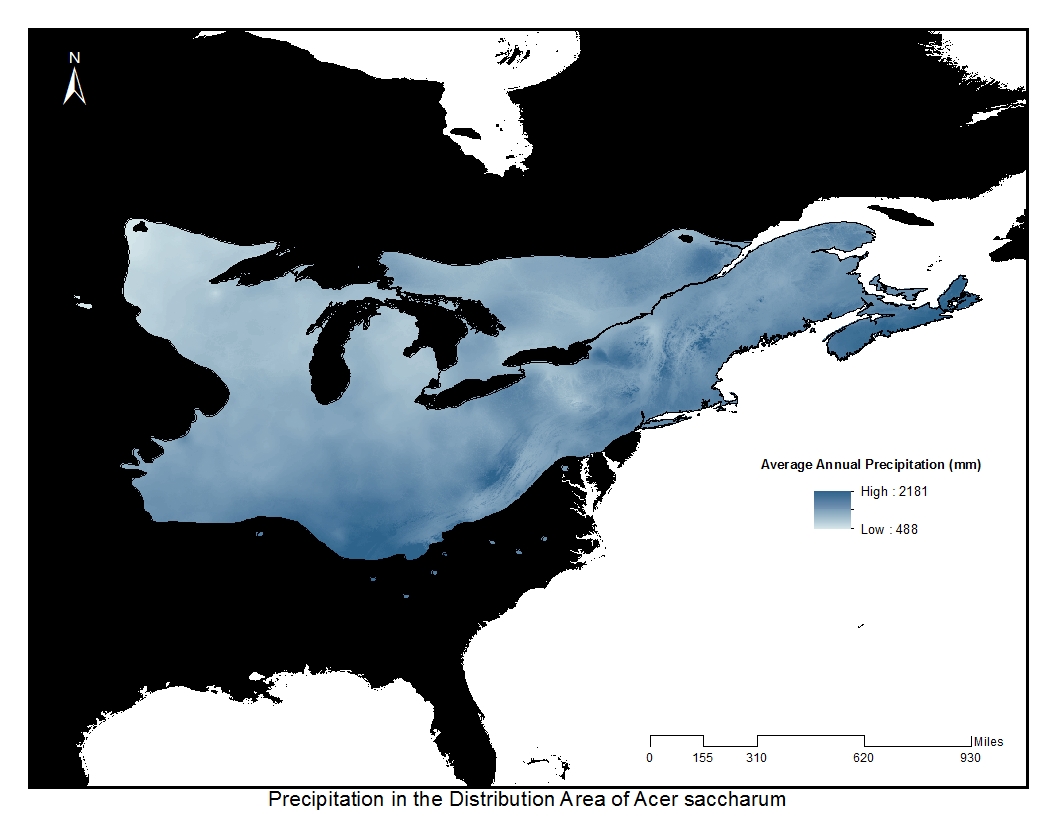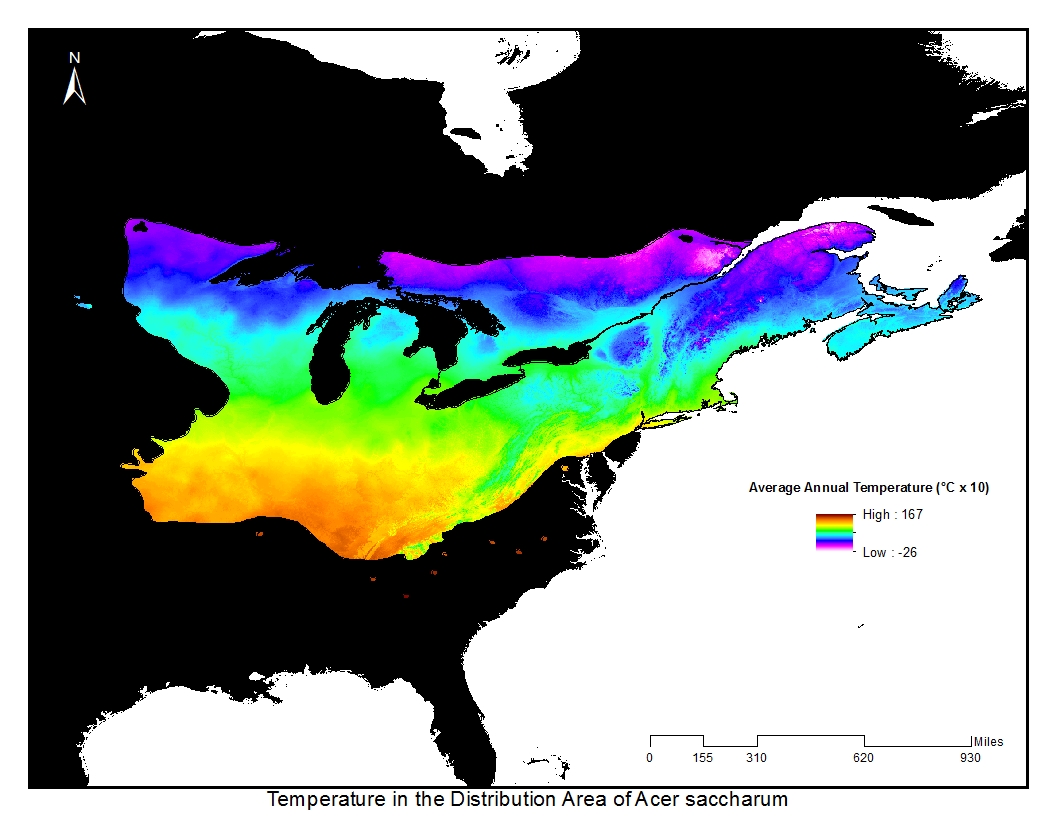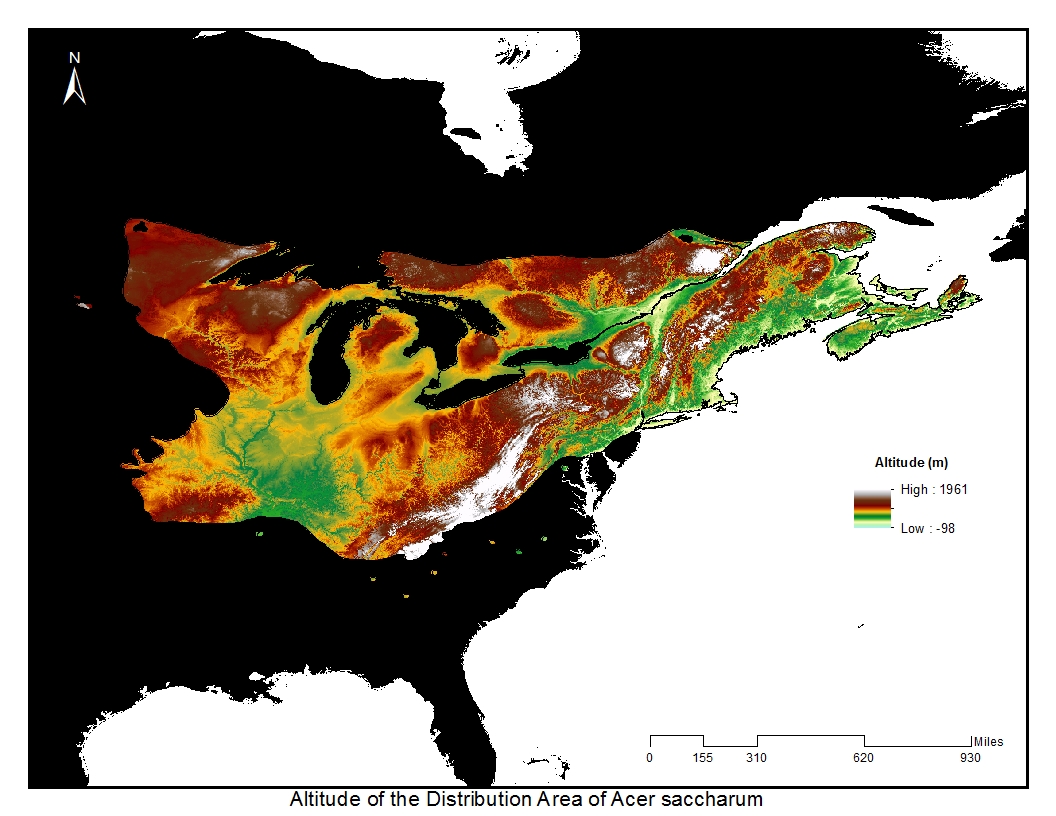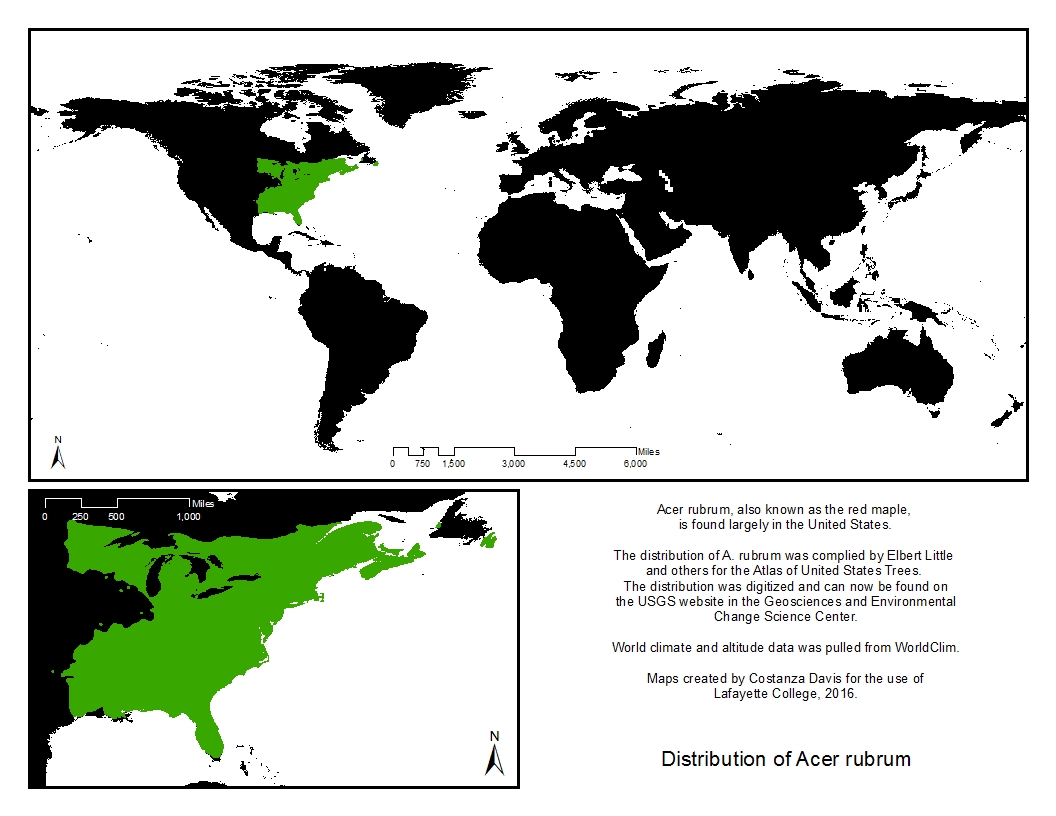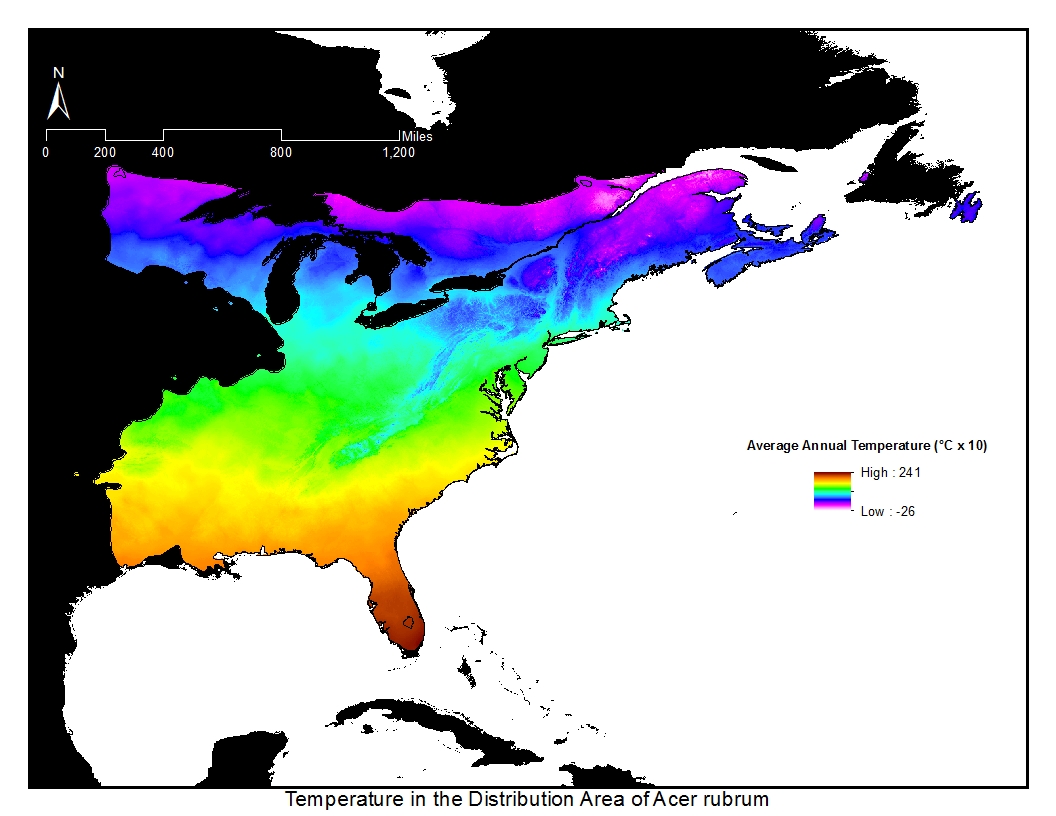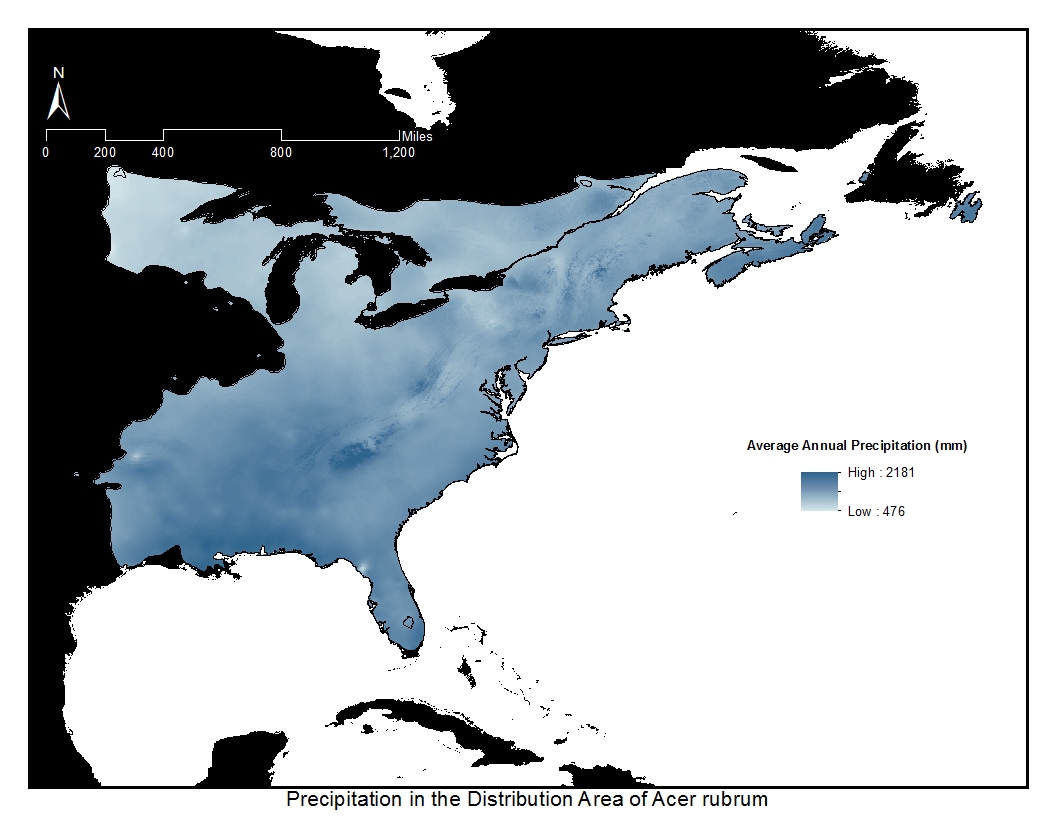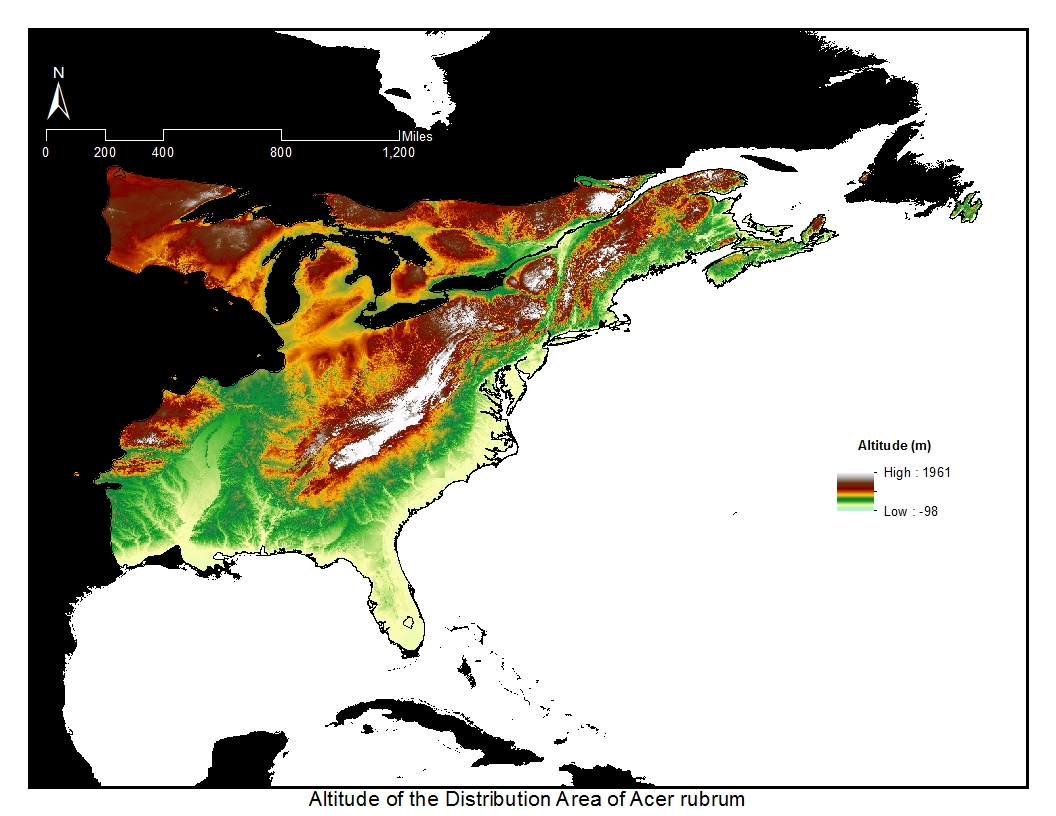The sugar maple, Acer saccharum, is also known as the hard maple or rock maple.
The sugar maple can reach heights of 40 to 80 feet by its 50th year. After the 50th year, growth typically slows. While the sugar maple can live under a wide variety of conditions, depth of the soil andparent material do greatly affect the height of the sugar maples in that area.
Sugar maples can exist on soils that are strongly acidic (pH 3.7), but is typically found on soils with a pH of 5.5 to 7.3, acidic to slightly alkaline. Additionally, sugar maples do best on well-drained loams. Dry, shallow soils and swampy soils are not conducive to the sugar maple. Further south in its range, the sugar maple is picker in terms of soil, while further north it is more accepting of a variety of soils. Additional variations by state include preferring abundant organic matter in New Hampshire and preferring to coexist with oaks in West Virginia.
The sugar maple is found only in regions with cool, moist climates. Typical ranges in temperatures in the sugar maple region are from -40 degrees F to 100 degrees F, and the averaged annual temperatures for its area are shown in the map below. Additionally, sugar maples are very tolerant of shade, more so than most hardwoods.
The leaves of the sugar maple are typical of the maple family, with five lobes. Leaves tend to be dark green on top with a paler undersurface and can be 3 to 5 inches long. Unlike the red maple, which has serrated lobe margins, the lobe margins on a sugar maple are shallow and smooth. Sugar maples produce high quantities of leaf litter. The leaves possess noticeable quantities of calcium, magnesium, potassium, phosphorus, nitrogen, and ash, and are themselves acidic, typically with a pH of 4.0 to 4.9. Calcium content drops when the trees are living in particularly acidic soils.
Sugar maples have yellow flowers up to 2.5 inches long which appear in drooping clusters between late March and mid-May. Flowering is rare until at least 22 years old, and gets heavier as the tree gets older. A single tree will have both male and female flowers, with both sexes appearing in the upper crown of the tree, while only males are found in the lower part. Pollination occurs without the need of insects like bees.
The fruit of the sugar maple is a double samara, which takes 16 weeks to ripen. When the samaras are yellowish green, the seeds inside are considered mature. As with flowers, older trees tend to produce high crops of fruits.
The bark of the sugar maple is dark grey, and develops rough vertical grooves and ridges as it ages, eventually appearing dark brown. Twigs tend to be reddish-brown with a white interior.
Numerous insects, fungi, and diseases may harm the tree, but while insects may kill it, diseases rarely do, instead only deforming a tree or decreasing a tree’s volume. Furthermore, animals such as deer, squirrels, birds, and porcupines feed on the tree, though rarely causing serious damage, except when insects or fungi take advantage of the weakened tree. Road salt can also severely hurt sugar maples.
In terms of commercial lumber, the sugar maple is one of the most important hardwoods, comprising of 9% of hardwood land at 31 million acres and 6% of hardwood sawtimber volume in the Unites States. Another common usage of the tree is maple sugar. The trees are tapped early in the spring, from which sap is derived. The sap is then boiled into a syrup, and through evaporation can be turned into maple sugar. 34 gallons of sap can produce 1 gallon of syrup or 8 pounds of sugar.
The sugar maple on campus can be found between Skillman Library and Markle Hall.

